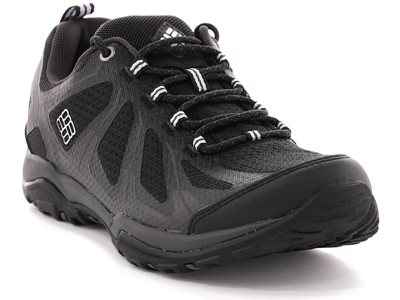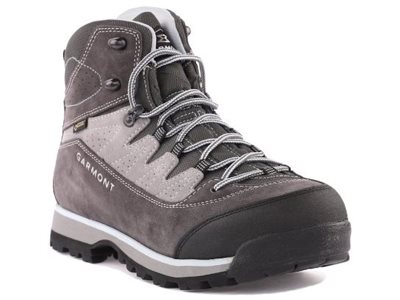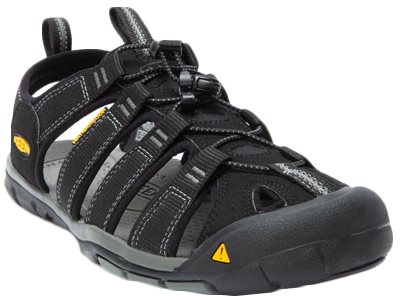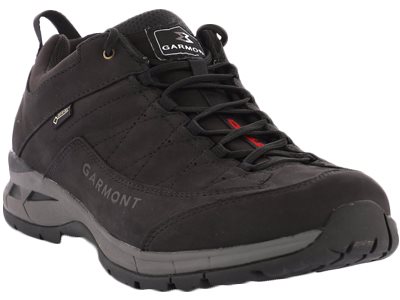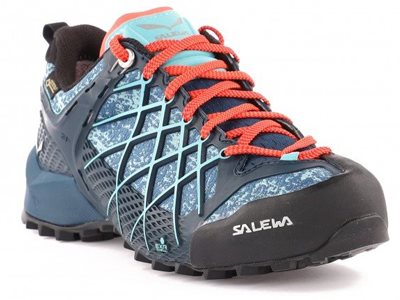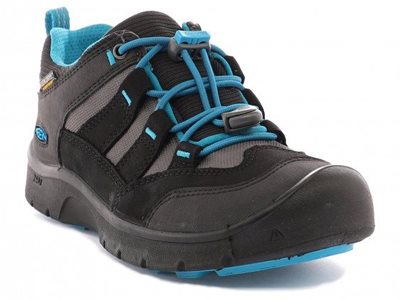How To Choose Outdoor Shoes
Are you choosing new outdoor shoes, but you’re not sure which ones will be best for you and your trips? We can help you choose. We will describe the most important parameters, such as the material or type of membrane, and we will also show you weaks that will come in handy.
Guide to choosing outdoor shoes - CONTENTS
- Tips for choosing outdoor shoes
- What shoes to choose when I go...
- What is important when choosing outdoor shoes?
- Shoes by type
- Shoes according to purpose
Tips for choosing outdoor shoes
- Know where you will walk in your shoes. Will they be used for ordinary trips on dirt roads or challenging hikes to the mountains? Also consider water resistance.
- Many people use outdoor shoes every day. So focus not only on appearance, but above all on comfort and personal needs.
- There are three basic types: high boots, low boots and sandals. Choose between them depending on the length of the trip, difficulty and weather conditions in which you are likely to wear them.

What shoes to choose when I go...
• Light textile shoes
• Low trekking / running shoes / sandals
• Membrane is not necessary
• Textile / leather combination
• Low trekking boots
• Membrane depending on the weather
• Leather, more durable shoes
• Taller trekking boots
• Shoes with a membrane
• Nubuck leather - durability is a priority
• Sturdy, high boots
• Shoes with a membrane
What is important to consider when choosing outdoor shoes?
Difficulty of the trip
How you use the shoes is the alpha and omega of the right choice. The vast majority of properties depend on the method of use:
The size of outdoor shoes
The most important thing for outdoor shoes is that they fit tightly to your foot. Loose shoes could cause you discomfort during long trips, such as swollen ankles or blisters, because your foot would "float" in all directions. Of course, this does not apply to sandals, because the movement of the foot usually does not affect the size. Don't be afraid to choose sandals a little bigger than your foot so that it doesn't slip on the ground. Sandals are also generally more suitable for shorter trips.
Na At Alza.cz, you can easily sort your shoes according to EU, UK and US sizes. They are also sorted according to the Mondo point scale, which makes online shoe shopping even easier. It states the exact size of the inner space of the shoe in millimeters, so you can choose shoes that will fit you perfectly. At the same time, we have prepared a specialized article for you: How to choose the right shoe size.
Last but not least, as elsewhere, we offer a 14-day period for returning shoes that do not fit you.
Material
It is very important to take into account the material of the shoe, as it will greatly affect your comfort, external durability and other properties. Pay particular attention to the material of the upper part/ body of the shoe, because it determines how breathable the shoe is and how long it will last. For this part of the shoe you will most often encounter the following materials.
The lining and insole in the shoe primarily serves for comfort. It removes moisture from the foot, adds durability to the whole shoe and also contributes to cushioning. In terms of materials, you will most often encounter textiles or nylon, which will ensure the greatest comfort and, in combination with the leather upper part of the shoe, also sufficient resistance for more demanding trips. However, the most durable shoes also have a leather lining.
Another very important part of durable shoes is the membrane. Shoes with a membrane are more waterproof (they let sweat out, but they don't let water in), or they also offer better thermal insulation, which some will certainly appreciate. However due to the extra layer, it is also a bit less breathable. If you choose from shoes with a membrane, you will come across the following types, for example:
The sole is the only part of the shoe that comes into direct contact with the terrain. This rubber part of the shoe is usually directly adapted to the shoe so that the walk is as comfortable as possible. Probably the largest manufacturer of rubber soles is the company Vibram. The thickness of the sole also plays a role in the selection process. In general, the thicker it is, the more the shoe is suitable for more demanding terrain.
A very important part is also the midsole. Thanks to this layer between the upper and the sole, the shoes are much more comfortable. The function of this part of the shoe is primarily to absorb shocks and ensure the overall stability of the foot. Most shoes here also have specific damping systems.
Additional features
When choosing outdoor shoes, it is also good to think about what else you might require from the shoes. The most important features include:
Offer shoes by type
Low outdoor shoes
Low outdoor shoes represent the golden mean if you are looking for universal shoes. You will often use them as everyday shoes due to their low weight. The material is diverse in the case of low boots, but if you are considering longer hikes, we recommend looking for water resistant shoes. Overall, however, low boots are not very suitable for more demanding terrain.
Sandals
Sandals are the most popular type of footwear, especially in the warm summer months. The big advantage is that they are open, thanks to which the foot is well ventilated and at the same time the shoe weighs almost nothing. Sandals are thus an ideal choice for easy trips. However on uneven roads there is a risk that they will be uncomfortable, because every stone can easily slip into them and the shoe is also softer overall. They offer very little protection.
Offer shoes according to purpose
Men's outdoor shoes
Men's shoes are usually characterized by a larger size and sometimes a slightly wider shape of the shoe. These are not strict rules. It can always happen that a lady has a slightly larger foot than normal, in which case it is not a problem to buy men's shoes. So you don't have to worry about any health problems or discomfort at all.
Women's outdoor shoes
Women's shoes are usually made in smaller sizes and with a narrower footprint to better suit most women. However, as in the case of men's shoes, it is not a problem if a man chooses women's shoes, or vice versa. It is usually the case that women's shoes are usually a bit more colorful and more diverse in design.
Children's outdoor shoes
In this category you will find the ideal shoes for your kids. First of all they differ in size (obviously), but they can be adapted differently. In addition to them being easier to put on thanks to velcro straps, you can also come across, for example, a special treatment that prevents the feet from flattening or alleviates similar problems to some extent.
Glossary - outdoor footwear
Gore-Tex
Gore-Tex is a special type of membrane that is used in combination with durable textiles. It boasts permanent waterproofness and high frost resistance, while still retaining its breathability.
Shoe parts
Each shoe consists of several parts, each of which has its own important function. For example, a sole, upper, membrane, etc. You will find out where the individual parts are located and what they are used for in the article.
Nubuck leather and suede
If you are looking for the most durable shoes and classic leather is not enough for you, you would probably need specially cut leather shoes. At the cost of more frequent maintenance, it significantly improves the strength and overall durability of the shoe. There are several types of specially cut leather - the most common are nubuck and suede.
Glossary



